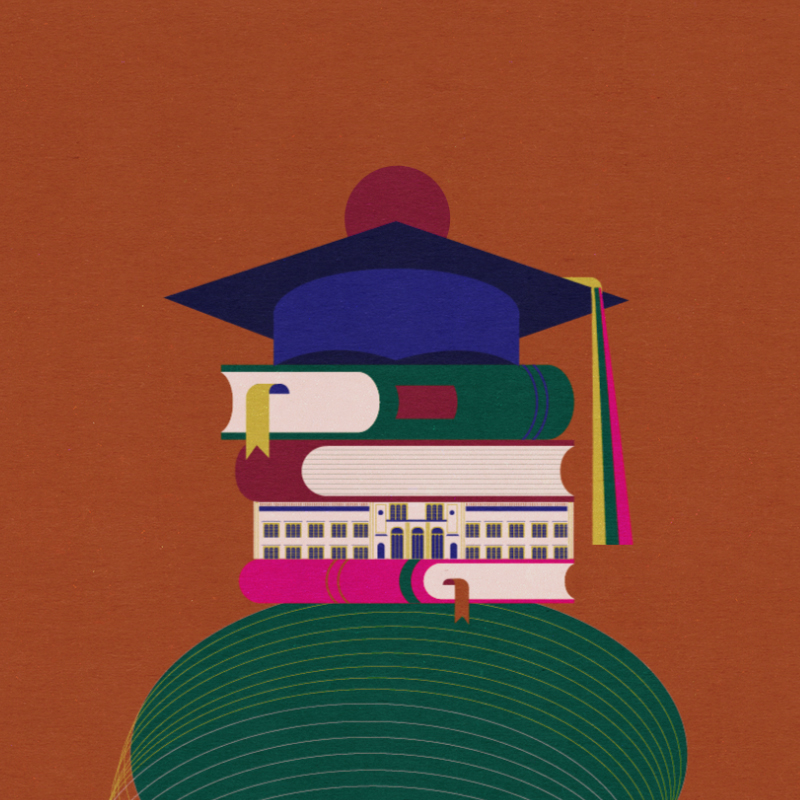The University of Lithuania, or what do science and freedom have in common?
> BACK TO 100 STORIESThe oldest and largest university in Lithuania is Vilnius University. It was founded in 1579 by the Jesuits – an order of Roman Catholic Monks. The University of Lithuania, which opened its doors in 1922, may well be the most important educational institution founded by lay people with their own funds – Lithuanian intellectuals and well-educated citizens. The most important scientists of the country worked at the University of Lithuania, the first textbooks in Lithuanian were published there, discussions were held on serious issues, and there were even playful “courts” at which styles of writing and living were “condemned” or “justified”.
The history of the founding of the University of Lithuania is closely related to the struggle for independence and especially with the difficult interwar period – the period between the end of World War I and the beginning of World War II (1918–1939). Vilnius University was closed on the orders of the Tsar of Russia in 1832 because its professors and students participated in the uprising of 1831 – Lithuania was part of the Russian Empire at that time. After the declaration of Lithuania’s independence in 1918, people considered reopening the university once again. However, when the capital Vilnius was occupied by Poland in 1919, they decided to open the University of Lithuania in Kaunas, the second largest city in the country.
Why was it so important to have a Lithuanian university? A university not only trains specialists in various professions, but also shapes the thinking and values of the country’s population and supports cultural life. A central mission of the University of Lithuania was to popularise science – to spread knowledge and the latest discoveries in a language and in ways that ordinary people could easily understand. For example, it encouraged the publication of articles in the regular newspapers and magazines as well as in scientific journals, public speeches, and participation in discussions. That’s why university lecturers were seen as cultural leaders during the interwar period.
The University of Lithuania was founded by a group of intellectuals led by Zigmas Žemaitis. The symbolic date chosen for the opening of the university was 16 February 1922. This date coincides with the restoration of Lithuania’s independence on 16 February 1918. The University had six faculties: Theology-Philosophy, Humanities, Law, Mathematics-Nature, Medicine and Technology. Over the years, the number of students grew: there were 990 students at the university in 1922, and 3.657 in 1939. Famous scientists and people who were involved in cultural life worked at the university including Tadas Ivanauskas, Jonas Jablonskis, Vincas Krėvė-Mickevičius, Antanas Maceina, Jonas Mačiulis-Maironis, Vincas Mykolaitis-Putinas, Antanas Smetona, Balys Sruoga, Adolfas Šapoka, Juozas Tumas-Vaižgantas and others. The university also had various student associations: the largest were the Lithuanian Catholic Federation Ateitis [Eng. future] and Neo-Lithuania.
Some interesting facts: there were no exams at the University of Lithuania – students reported to their lecturers in person. The university was completely autonomous: this meant that even the police could not break into the premises.
The University of Lithuania has repeatedly changed its name. In 1930, it was given the name of Vytautas Magnus University (VMU), and in 1940, when Lithuania was occupied by the Soviets, it was renamed Kaunas University. The last important stage of the restructuring of the university took place in 1989. The university restored its name of Vytautas Magnus University and humanities and social sciences were chosen as its educational direction.

